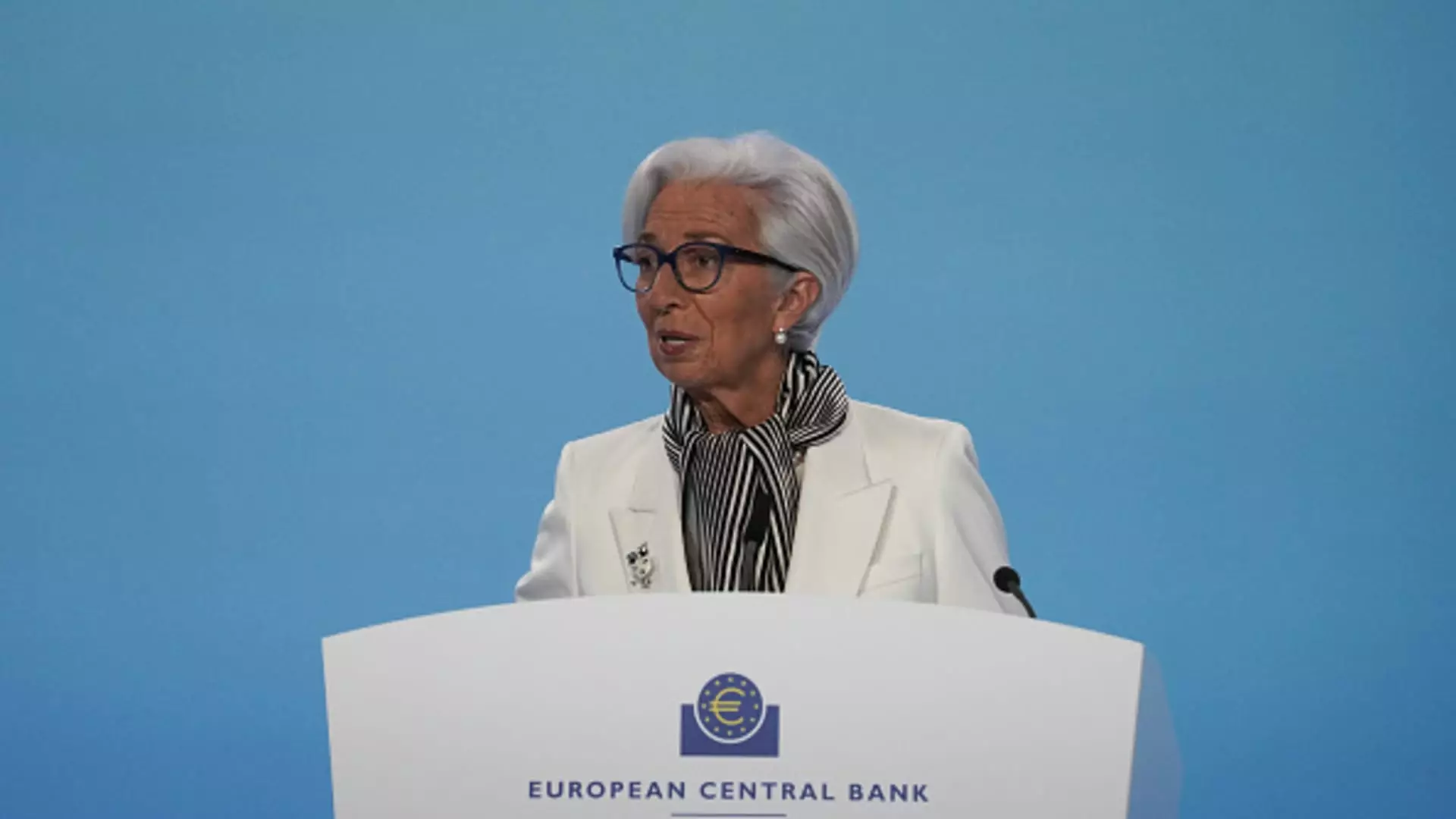The European Central Bank recently made a significant announcement regarding its inflation forecast and interest rates. ECB President Christine Lagarde confirmed that there would be no change in interest rates, which was widely anticipated. However, the bank also lowered its annual inflation forecast, signaling potential challenges ahead for the Eurozone economy.
The staff projections for inflation in 2024 were revised down to an average of 2.3% from 2.7%. Looking further ahead, the forecast shows inflation reaching the ECB’s 2% target in 2025 and then cooling to 1.9% in 2026. This indicates a downward trend in inflation expectations, which could have implications for the central bank’s monetary policy decisions in the future.
In addition to the inflation forecast, the ECB also updated its forecast for economic growth in 2024, expecting a growth rate of 0.6%, down from the previous estimate of 0.8%. The bank anticipates GDP expansion of 1.5% in 2025 and 1.6% in 2026, showing a slightly weaker outlook compared to previous projections. This suggests that the Eurozone’s economic recovery may be slower than initially anticipated.
Following the ECB’s announcement, market expectations for a rate cut have increased, with many anticipating a move in the summer of this year. The euro traded lower against the British pound, and bond yields fell as investors adjusted their positions based on the revised forecasts. The ECB’s key rate currently stands at 4%, up from -0.5% in June 2022, after a series of 10 rate hikes.
During a press conference, ECB President Christine Lagarde emphasized the importance of upcoming data in shaping the central bank’s decisions. She acknowledged the progress made in the disinflationary process but also highlighted the need for more evidence and data before making any additional moves. Lagarde mentioned wage growth and profit margins as key factors that the ECB will monitor closely, along with the overall economic environment.
Market analysts have interpreted the ECB’s decision as relatively dovish, given the downward revisions in both growth and inflation forecasts. The focus now shifts to the stickiness of core inflation, driven by a tight job market. Some analysts predict a series of rate cuts beginning in June, with expectations of 25 basis points per meeting, totaling 150 basis points or more in total. This underscores the cautious approach that market participants are adopting in response to the ECB’s latest announcements.
The European Central Bank’s decision to lower its inflation forecast while maintaining interest rates reflects the ongoing uncertainties surrounding the Eurozone economy. With market expectations shifting towards potential rate cuts in the near future, investors and analysts will closely monitor economic indicators and data releases for clues about the ECB’s next steps. The central bank’s focus on inflation, economic growth, and monetary policy will continue to shape the financial landscape in the months ahead.


Leave a Reply